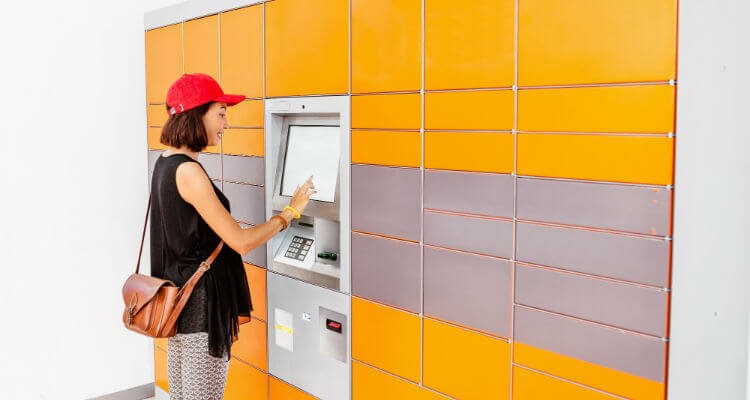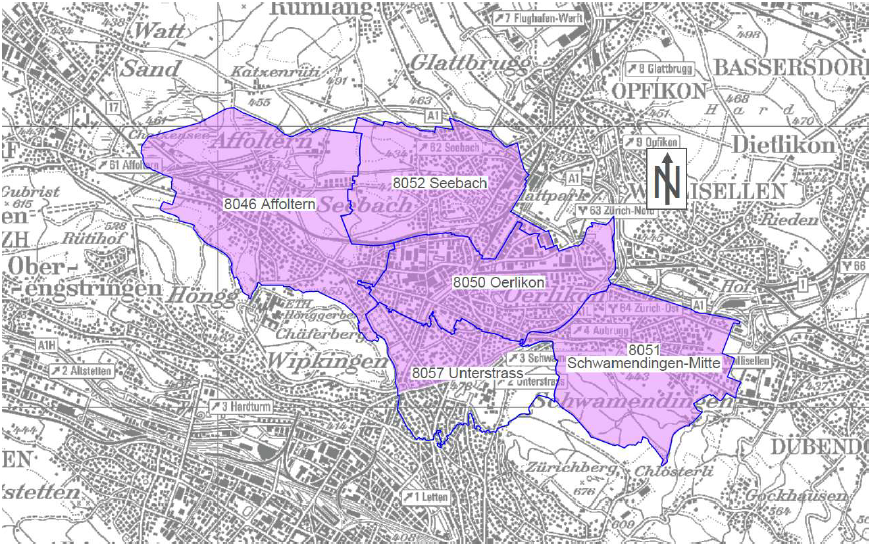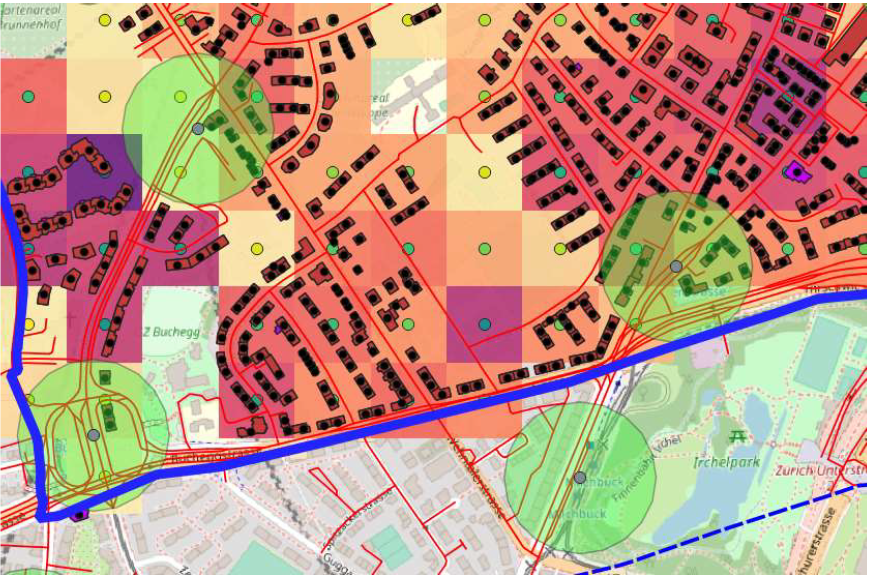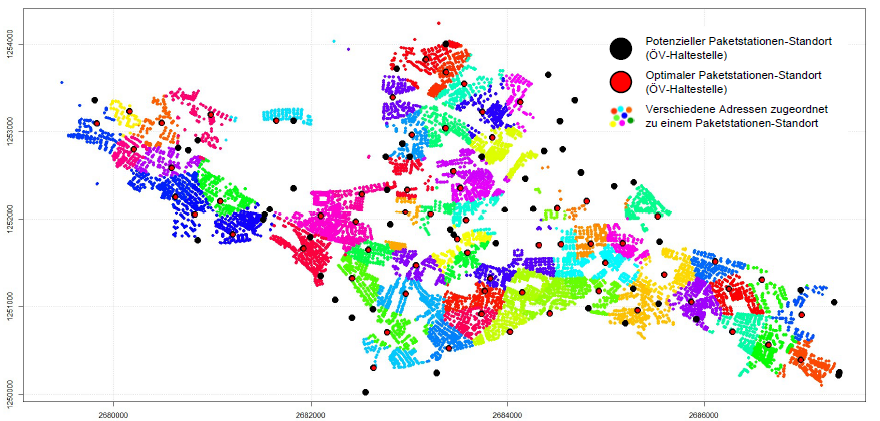In 2019, 84.4% of the Swiss population lived in urban regions. The urbanisation trend still increases. Due to this and the fact that online shopping has gained popularity, the traffic load on a city’s infrastructure has increased dramatically. Currently, 10% of the transport performance (in vehicle km) on Swiss roads is caused by freight transport, causing 21% of transport related CO2 emissions. It is expected that the parcel volume will increase by another 75% and freight transport by 37% until 2040, leading to an extended logistics fleet of 36%.
Consumers ask for a diversified assortment of goods and their instant availability, while logistics space has been pushed out of the city centres towards suburban or rural areas. The new legislation about inner-city densification increases this tendency even further, as the last available spaces have been reserved for housing and offices rather than for logistics space.
All this leads to challenges in different areas, as shown in Figure1.

One challenge of logistics service providers (LSP) is the necessity of several delivery attempts if the customers are not at home to accept the parcel in person. This further increases the already dense traffic situation caused through LSP. To solve this problem, the customers need to be decoupled from the supplier without losing the prove that the customer has accepted the delivery and with guaranteed save storage of the deliveries. This can be achieved through the installation of parcel lockers. Parcel lockers are secure containers where parcels are held until the customer collects them. The parcel lockers are self-service pick-up stations where the right compartment opens after the customer has either entered a code or has scanned a provided QR code from the supplier. With this, parcel lockers decouple customers and suppliers in terms of necessity to be at the same time at the same spot.

To analyse how many parcel lockers would be needed within the city of Zurich and where to place them to have the highest possible convenience for customers, ZHAW-INE and ZHAW-IDP conducted a study and developed a model to simulate different scenarios. The unit of analysis were the northern districts of the city of Zurich (purple areas in Figure 3).

The goal of the modelling was to find a possibility where the residents of Zurich only lose a minimum of comfort compared to home delivery, while supporting to free the city from freight traffic.
Each day, approximately 7500 parcels need to be delivered to the northern districts of Zurich. As studies show, residents are not willing to walk more than 250m to a parcel locker to pick up or return a delivery. Subsequently, the developed model takes the parcel volume, the distance to apartment complexes, and the position of public transportation stops into consideration (see Figure 4), to naturally bind the parcel lockers into the walk to the next public transportation stop to work or back home for parcel pick-up or drop-off.

The simulation of different scenarios provided results that if 33% of the parcels are deposed in parcel lockers and each parcel locker has 38 compartments, 64 parcel lockers are necessary in the norther districts of Zurich (see Figure 5). If this scenario is chosen, more than 80% of the households arrive at the next parcel locker in less than 250m walking distance.

The results of the study provide insights into the possibility to install parcel lockers to decouple customers and suppliers in the necessity to be at the same time at the same spot to hand over the parcel in person. Parcel lockers hold the supply safe and thanks to self-service, customers can pick up their delivery whenever it fits into their daily schedule, while reducing freight traffic within the city of Zurich, resulting in a higher liveability within the city.